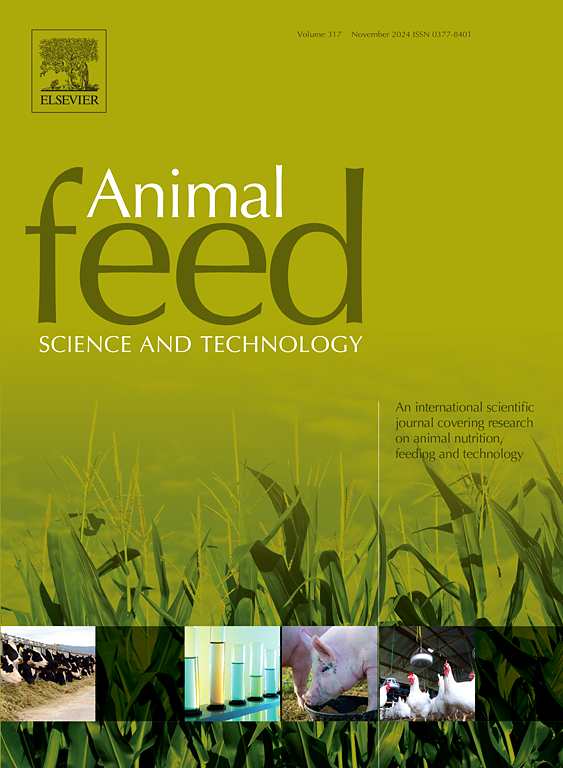A meta-analysis of the impact of an Aspergillus oryzae fermentation product on ruminal fermentation and dairy cow performance
IF 2.5
2区 农林科学
Q1 AGRICULTURE, DAIRY & ANIMAL SCIENCE
引用次数: 0
Abstract
There is evidence that some fermentation products from yeast and fungi have positive effects on animal performance. However, results from different sources are inconsistent due to variations in types of diets or other factors across experiments. Therefore, our main goal was to evaluate the effects of feeding a fermentation product derived from the fungus Aspergillus oryzae (AO) on dairy cows’ performance through a meta-analysis from published literature. A database from experiments involving AO supplementation to dairy cows was built. In vivo experiments reported in selected peer-review papers published from 1984 to 2019 and 1 unpublished record were included. A total of 26 studies comprising 76 treatment means were pooled in the database. Data were analyzed by the means procedure of SAS (SAS 9.0, SAS Institute Inc., Cary, NC). When dairy cows received AO as a supplement, milk yield and fat corrected milk were significantly (P < 0.0001) increased. Decreased milk fat and protein content was also found (P < 0.0001), probably because of the increased milk yield. Nutrient digestion, except for crude protein, was enhanced by AO supplementation (P < 0.0001). As the increase in dry matter intake from AO treatment does not fully explain the rise in milk production, it is likely that AO also influences nutrient bioavailability and partitioning for productive purposes. Our results indicate that AO shows a consistent response in milk production across feeding situations (season and feeding systems) and diets (forage type and level of concentrate), partly boosted by an increase in dry matter intake and by improvements in dry matter digestibility. Future work should focus on improving our understanding of the mode of action and, especially, how AO can affect the immune response in high-producing dairy cows.
求助全文
约1分钟内获得全文
求助全文
来源期刊

Animal Feed Science and Technology
农林科学-奶制品与动物科学
CiteScore
6.00
自引率
6.20%
发文量
266
审稿时长
3 months
期刊介绍:
Animal Feed Science and Technology is a unique journal publishing scientific papers of international interest focusing on animal feeds and their feeding.
Papers describing research on feed for ruminants and non-ruminants, including poultry, horses, companion animals and aquatic animals, are welcome.
The journal covers the following areas:
Nutritive value of feeds (e.g., assessment, improvement)
Methods of conserving and processing feeds that affect their nutritional value
Agronomic and climatic factors influencing the nutritive value of feeds
Utilization of feeds and the improvement of such
Metabolic, production, reproduction and health responses, as well as potential environmental impacts, of diet inputs and feed technologies (e.g., feeds, feed additives, feed components, mycotoxins)
Mathematical models relating directly to animal-feed interactions
Analytical and experimental methods for feed evaluation
Environmental impacts of feed technologies in animal production.
 求助内容:
求助内容: 应助结果提醒方式:
应助结果提醒方式:


